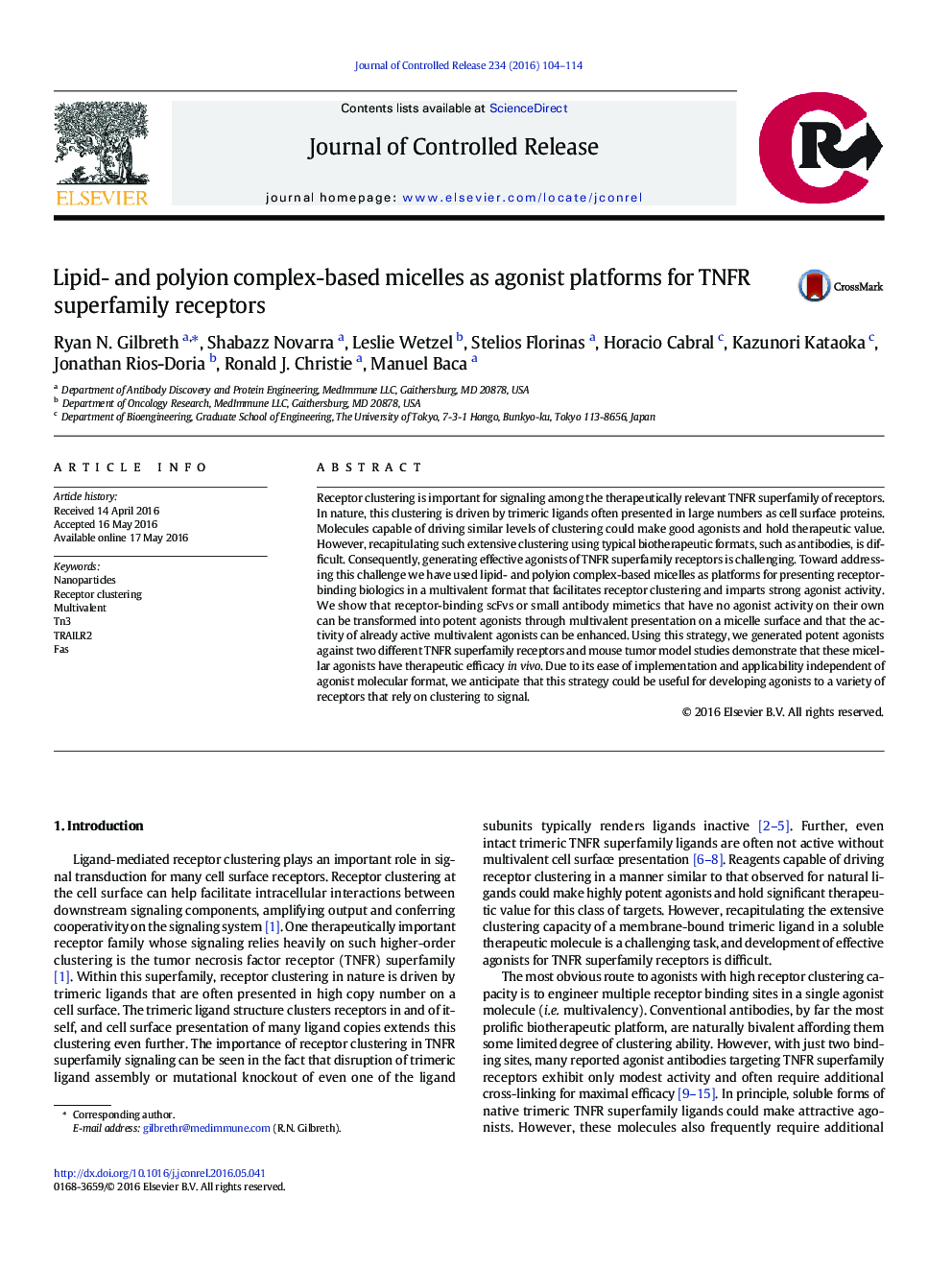| Article ID | Journal | Published Year | Pages | File Type |
|---|---|---|---|---|
| 1423514 | Journal of Controlled Release | 2016 | 11 Pages |
Receptor clustering is important for signaling among the therapeutically relevant TNFR superfamily of receptors. In nature, this clustering is driven by trimeric ligands often presented in large numbers as cell surface proteins. Molecules capable of driving similar levels of clustering could make good agonists and hold therapeutic value. However, recapitulating such extensive clustering using typical biotherapeutic formats, such as antibodies, is difficult. Consequently, generating effective agonists of TNFR superfamily receptors is challenging. Toward addressing this challenge we have used lipid- and polyion complex-based micelles as platforms for presenting receptor-binding biologics in a multivalent format that facilitates receptor clustering and imparts strong agonist activity. We show that receptor-binding scFvs or small antibody mimetics that have no agonist activity on their own can be transformed into potent agonists through multivalent presentation on a micelle surface and that the activity of already active multivalent agonists can be enhanced. Using this strategy, we generated potent agonists against two different TNFR superfamily receptors and mouse tumor model studies demonstrate that these micellar agonists have therapeutic efficacy in vivo. Due to its ease of implementation and applicability independent of agonist molecular format, we anticipate that this strategy could be useful for developing agonists to a variety of receptors that rely on clustering to signal.
Graphical abstractFigure optionsDownload full-size imageDownload high-quality image (206 K)Download as PowerPoint slide
